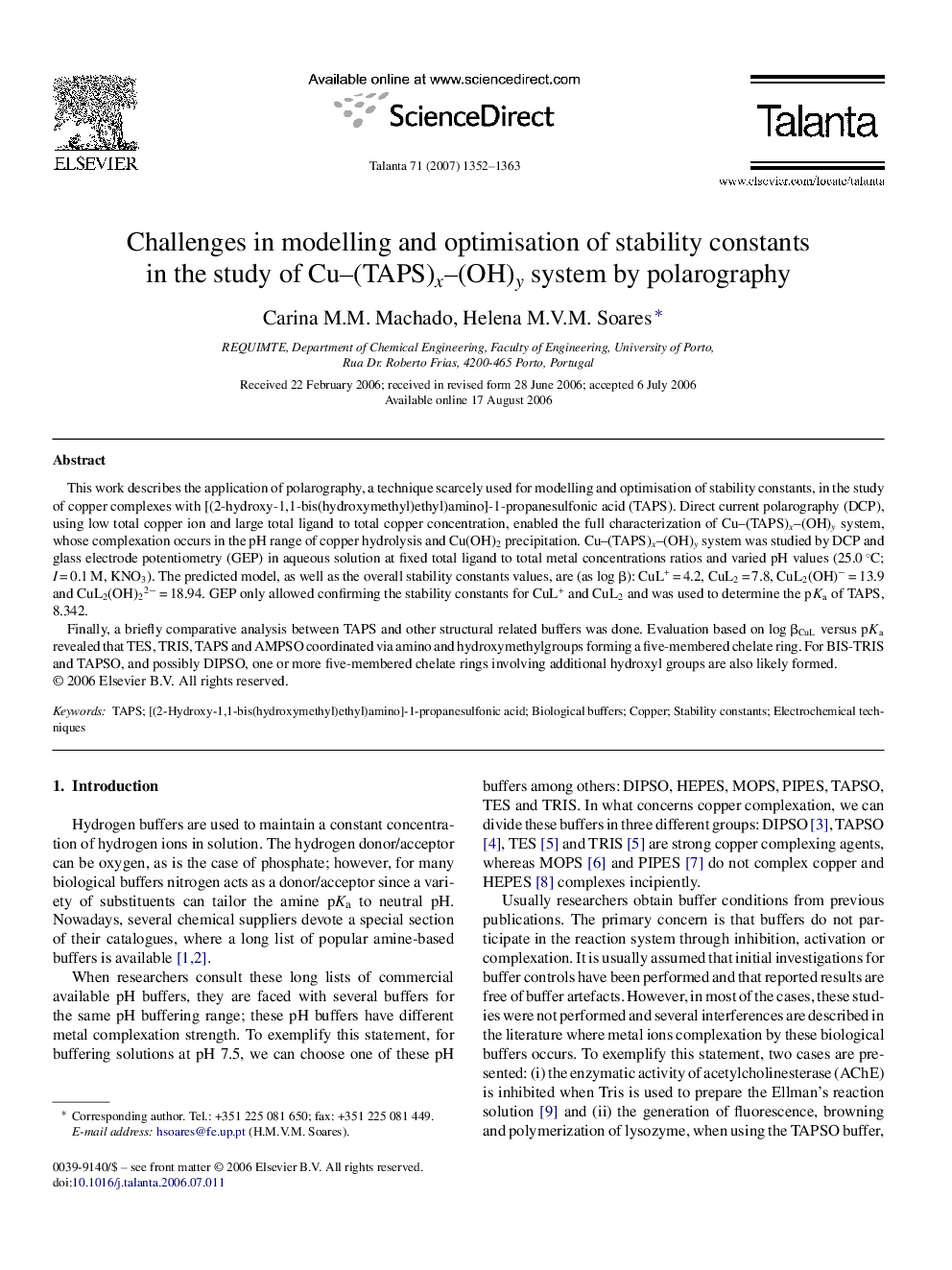| کد مقاله | کد نشریه | سال انتشار | مقاله انگلیسی | نسخه تمام متن |
|---|---|---|---|---|
| 1246158 | 969746 | 2007 | 12 صفحه PDF | دانلود رایگان |

This work describes the application of polarography, a technique scarcely used for modelling and optimisation of stability constants, in the study of copper complexes with [(2-hydroxy-1,1-bis(hydroxymethyl)ethyl)amino]-1-propanesulfonic acid (TAPS). Direct current polarography (DCP), using low total copper ion and large total ligand to total copper concentration, enabled the full characterization of Cu–(TAPS)x–(OH)y system, whose complexation occurs in the pH range of copper hydrolysis and Cu(OH)2 precipitation. Cu–(TAPS)x–(OH)y system was studied by DCP and glass electrode potentiometry (GEP) in aqueous solution at fixed total ligand to total metal concentrations ratios and varied pH values (25.0 °C; I = 0.1 M, KNO3). The predicted model, as well as the overall stability constants values, are (as log β): CuL+ = 4.2, CuL2 = 7.8, CuL2(OH)− = 13.9 and CuL2(OH)22− = 18.94. GEP only allowed confirming the stability constants for CuL+ and CuL2 and was used to determine the pKapKa of TAPS, 8.342.Finally, a briefly comparative analysis between TAPS and other structural related buffers was done. Evaluation based on log βCuL versus pKapKa revealed that TES, TRIS, TAPS and AMPSO coordinated via amino and hydroxymethylgroups forming a five-membered chelate ring. For BIS-TRIS and TAPSO, and possibly DIPSO, one or more five-membered chelate rings involving additional hydroxyl groups are also likely formed.
Journal: Talanta - Volume 71, Issue 3, 28 February 2007, Pages 1352–1363